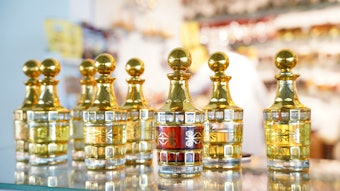
Read this article in its entirety in the May 2020 digital edition. . .
My grandmother used Pond’s Cold Cream for as long as I can remember. Maybe it calmed her severe psoriasis, or maybe it was affordable on my grandfather’s railroad pension. While I do not know the driver behind her purchase, what I do know is my sister and I both use it today, on occasion; sort of as a nod to her memory. The scent almost materializes as I think of it now ... and I’m not even fond of it.
Fast-forward to today, where in the face of the global COVID-19 crisis, we’re tucked away under shelter-in-place orders watching some of our favorite beauty brands shutter due to supply shortages or to divert efforts toward fighting the pandemic; i.e., Chanel, LUSH, Sephora and Ulta, to name a few. It can be disheartening to consumers to find their favorites are no longer within reach, and this connection may be more than hedonic love for the scent, feel or color of the product.
Perhaps it is the most compatible with their sensitive or compromised skin type and improves that condition, instilling in the user a sense of self-confidence. Maybe it connects with consumers on a deeper religious or social level; e.g., halal, fair trade, vegan, eco-friendly, etc.; or simply trust. It could also be something they associate with the memory of a loved one. But for now, in the wake of the coronavirus, these consumers may have to settle for alternatives.
The good news is, once we get back to “normal,” there’s a strong chance consumers will return to those favorite brands they’ve been missing. That’s because, as a reported by Forbes,1 a survey by Ipsos found a majority (55%) of consumers reported they are likely to “choose a trusted brand that I know over a new brand that I haven’t used before.” The same percentage (55%) agreed they are “loyal to the face, body, hair or beauty care items I use.”
Emotional connections between consumers and personal care products are just that—personal and subjective, which makes them difficult to measure or explain. But the cosmetics and personal care industry has made progress toward quantifying them, be it through simple questionnaires or complex biometrics; these and other efforts to reach consumers emotionally are the focus of this issue of Cosmetics & Toiletries.
Following is a brief sampling of how emotions and skin care can converge in cosmetics R&D. Here, industry experts weighed in with current market insights and future directions.
Feel-good Beauty
To Stefan Hettwer, Ph.D., senior R&D manager for cosmetic actives at Rahn AG, there’s a cascade of emotional drivers that ultimately lead to feel-good emotions from given beauty choices and a sense of duty. “We see an emerging interest in natural beauty and sustainability,” he writes. “We all try to self-optimize our body by consuming healthy foods and being active—don’t you agree that people in their 50s look much younger, now?
“The sustainability trend in cosmetics supports the development of natural cosmetic active ingredients. Organic farming, social responsibility and offsetting the carbon footprint [created during] production becomes important.”
Hettwer adds, “For the consumer, this gives a good feeling of doing what’s best for the environment. And this good feeling is the most powerful emotion to look young and happy.”
Patrick Foley, Ph.D., chief scientific officer of P2 Science, agrees there’s strong emotion in feeling that, as a consumer, you’ve made a choice for the greater good. “Performance is still the primary driver in the beauty routine, and always will be, but the key emotional fulcrum in the consumer psyche (mine included) is the desire for a connection to something larger. Something positive. Something that acts both in the immediate experience of using the product, and in the world in which it exists.”











